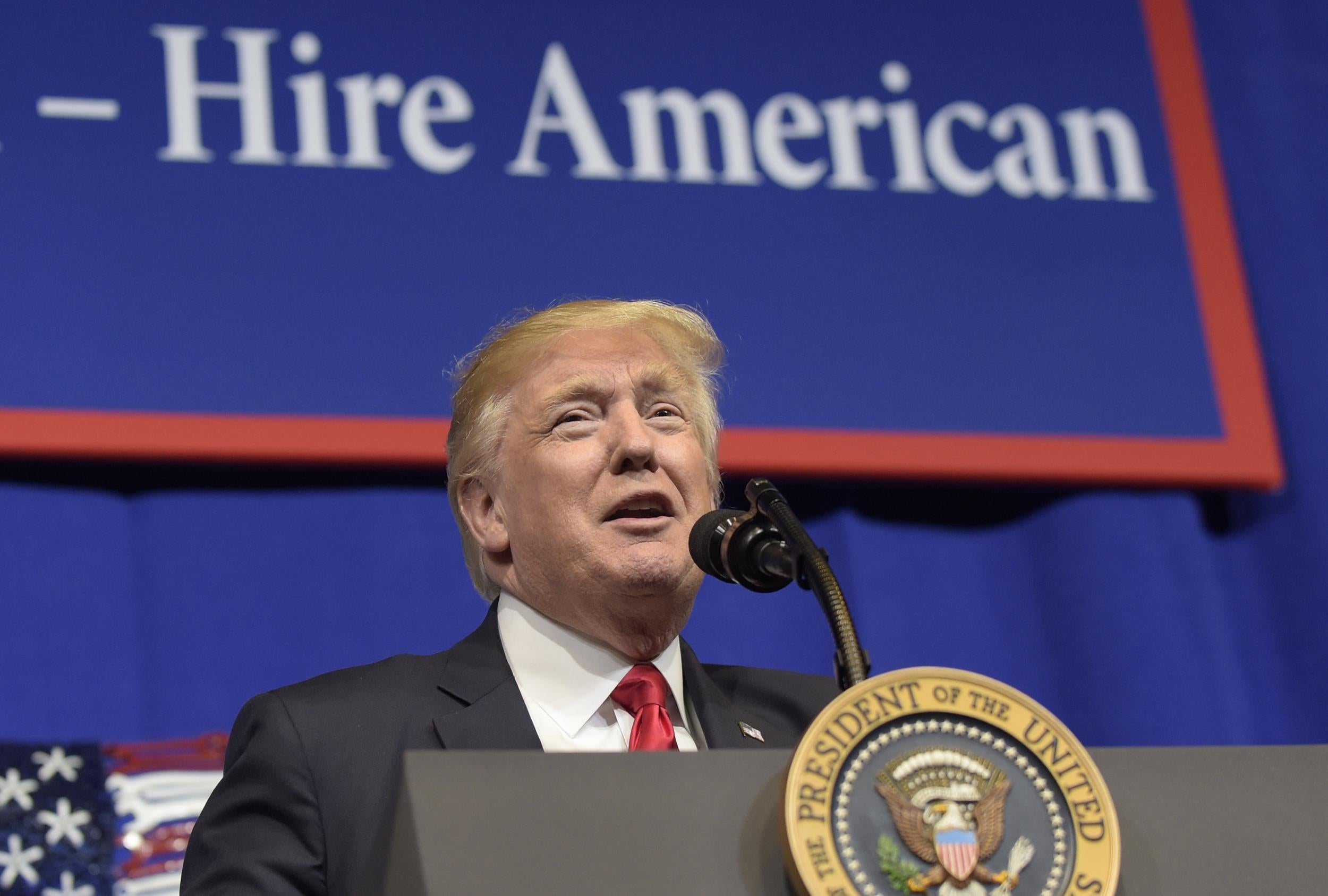US high-tech firms will cope with immigration restrictions, low-tech businesses won’t
Trump is scaling back on H-1B visas that allow companies to employ speciality graduates, but most immigrants come to the US for low-skilled jobs


We are shifting to a world where it will be more difficult for people to move to jobs in other countries. We don’t yet know how rigid the barriers will become, but it is fairly clear that the high point in global labour mobility has been passed. It is tempting to associate this with the election of Donald Trump and to Brexit, but actually the shift was evident a decade ago. It comes from the political left as well as from the right.
Remember Gordon Brown’s “British jobs for British workers”? That was at the party conference in September 2007. He was criticised for that remark, but he was a considerable politician. He knew the way the wind was blowing even then.
How will companies, accustomed to an ever more global economy, adapt? Brexit had yet to happen and we don’t know what other restrictions on labour movement will be introduced in Europe. So the first experience of what they will do will come in America. President Trump made this promise: “Buy American and hire American. It's not just a motto, it’s a pledge.”
So what might that mean for the future of immigration into the US? Start with the H-1B visa, now being reviewed following an executive order by the President. This is a non-immigrant visa that allows US companies to employ graduate level workers in specialty jobs for up to six years. It is used mostly by the high-tech industries on the West Coast, but in theory it can be for any professional job. It is easier to get than an immigrant visa but there are only 85,000 offered each year, with an additional 20,000 for workers who have done an advanced degree at a US educational establishment.
The high-tech industry finds it extremely useful because it can tap into the global skills market, but in the context of the US economy of 322 million people, the number is tiny. So would restricting it matter?
The answer is probably yes, but not in the obvious way. Shares of high-tech companies fell sharply as a result of the President’s actions. But it is hard to see the great engine of US growth languishing for long and the big established companies will find other ways to carry on the work. At the margin more work will be done overseas, mostly in Asia because that is where most H-1B applicants come from. The US higher education lobby will seek to increase the 20,000 cap and people studying then staying on gives a double boost to the economy.
The bigger challenge will be the threat to start-ups. It has been estimated that half the high-tech start-ups have come from immigrants. That does include people who have come with their families as children rather than those simply on H-1B visas, but the broader point stands: the West Coast of the US has become a magnet for global talent. That is the place you go to make it in the high-tech world. It is the place where the money goes too. Nothing will happen much for a few years for the stock of people wanting and able to found companies won’t disappear overnight. The people who are there are there. But the longer the restrictions last the greater the danger, but by the time the danger is evident some damage – we cannot know how much – will have been done.
And other immigration into the US? Most immigrants are coming in for low-skilled jobs, not high-tech ones. There are an estimated 11 million undocumented migrants, of which 8 million are in jobs. That 11 million figure sounds huge and is compared with the 3.5 million back in 1990. But for the past few years the number has been falling from a peak of more than 12 million in 2007. More than half are from Mexico.
In total, undocumented migrants account for just over 5 per cent of the workforce, but according to Pew Research, they are more than a quarter of the people working in farming and 15 per cent of those in construction. That is huge, and in economic terms it would make sense to bring these people into the formal workforce with some kind of amnesty. As it happens, it would be a rather good time to do so for the US labour market is quite tight at the moment, and as growth continues it is getting tighter. There are indeed some discouraged workers, people who have dropped out of the workforce, but there is no way they could fill a quarter of those farming jobs.
There’s the rub. High-tech America can at a pinch cope with more restrictions on migration. Low-tech America really can’t. My guess is that economics will eventually trump politics but not without a struggle. There will be some more restrictions at both ends of the labour market and as a result the coming squeeze will come earlier and be more serious than it otherwise would have been.
That is the obvious downside. The potential upside is that the US economy will, as it has in the past, learn how to deploy the available talent more effectively and increase its efficiency as a result. As in the past too, the rest of us will learn from the US how to do it.

Join our commenting forum
Join thought-provoking conversations, follow other Independent readers and see their replies